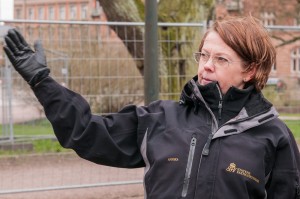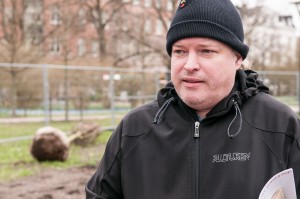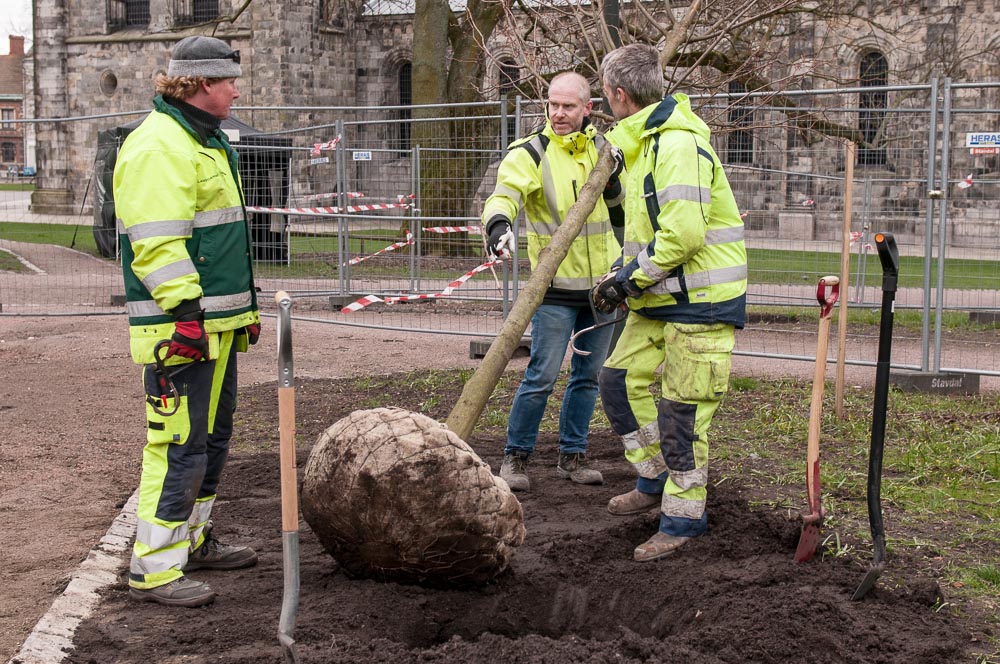17 new common lime trees are now being planted in Lundagård park.

“We still have several stages left for renewing the trees in the park. The last ones we want to touch are the trees in front of Kungshuset. They are from the 1740’s when the park was laid out”, she says.
Photo: Lukas J. Herbers
The National Property Board of Sweden is in the third stage of renewing the trees in Lundagård. 17 new common lime trees will be planted in the park, 13 of them by the Västra tvärallén. The tree plants come from a nursery outside Halmstad and are three to four meters tall.
“In the 19th century the chestnuts here were filled with concrete for increased stability. The concrete has cracked since then and lost its function, so it’s been heavy work uprooting the trees in Lundagård. We will also erect support against the wind and protective wire fence around the trees”, says Annika Rydén, deputy manager at the National Property Board of Sweden.
The NPB has also buried pipes for drainage and tubes for wiring. Wind support and fencing will also be erected by the trees.
“The area along the Filosofgången and Västra tvärallén will be completed for the doctoral award ceremony, even if the new grass might not have grown that much by then.
Tulip trees instead
Filosofgången, the walkway going from the south part of the park up to entrance of Kungshuset, will also receive new trees. Before, there were horse-chestnuts, but according to Lena Löfgren Uppsäll, park specialist at the National Property Board, it would not be optimal to plant horse chestnuts in the same spot again since the chestnut blight is becoming more and more common in Skåne.
“The chestnuts were part of the first academic garden which was situated here in the 18th century, so the Swedish national Heritage Board needs to get their say. But if it goes according to our plans we will plant tulip trees instead, but that might not be until fall or next spring”, she says.
“The tulip trees have large spring flowers, and Lund is after all a city of spring”, Annika Rydén added.

Photo: Lukas J. Herbers.
Wall and paving
In relation to each stage of the tree renewal, an archeological excavation is done of the concerned area. Under the Filosofgången was a paving from the middle of the 1740’s.
“It is a very well preserved paving, even if some stones surely has been replaced during the years”, says Mattias Karlsson, archeologist at the museum Kulturen in Lund.
He says that there has even been found pieces of the medieval wall that surrounded the area at the Lundagård park, which used to be a part of the bishops residence.
“Every examination and excavation we do, give us more clues to how the park used to look”, Mattias Karlsson says.
Text: Carl-Johan Kullving
Photo: Lukas J. Herbers
Translation:Lina Johansson






